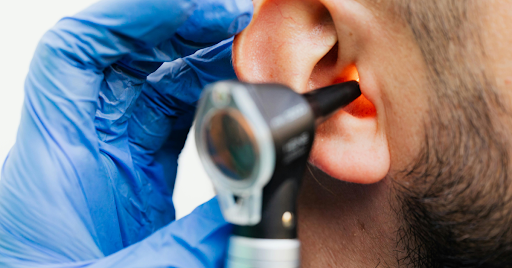Cholesteatoma: Causes, Symptoms, and Diagnosis
4 min read
By DocGenie , Published on - 12 September 2022
Cholesteatoma, or a benign ear cyst, is a condition that develops when the cells in an individual’s ear begin clumping together. Usually, cysts are filled with either fluid or air or an infected material like pus. While these conditions are true of most cysts, the one that forms inside the ear canal is called cholesteatoma.
That’s certainly a mouthful to say and also a little strange to wrap our minds around, especially because they are so rare. There’s no easy way to get used to a cyst forming in the middle of your ear. But the human body is as strange as it is wonderful and learning a little bit more about these cysts can help you be prepared to tackle them, should they ever appear anywhere around you.
According to medical experts, while cholesteatomas can occur for both men and women, they are quite rare and only found in around 9 out of 1,00,000 adults. Although these particular cysts are not cancerous, if ignored or left untreated for too long, they can lead to hearing loss.
In more extreme cases, since the cholesteatoma tends to retain bacterial growth, and can become infected, it requires surgical removal from the ear cavity. This cyst can also begin eating away at the bone, which is eventually what leads to permanent hearing loss in an individual, says Dr Yogesh Jain ENT specialist at DocGenie.
In even more rare cases where the cyst has been left ignored for an extended period of time, the infection may lead to any of the following conditions:
- Spread to the brain and cause an abscess
- Lead to facial paralysis
- Lead to a condition call labyrinthitis, wherein an individual feels dizziness or deafness because of the cellular growth
So, to re-emphasise, although cholesteatoma is not a cancerous condition it is one that can develop into a potentially serious condition and it does require immediate treatment by an ENT expert. If treated in time, a grave deterioration of this disease is certainly preventable, reiterates Dr Meenakshi Jain, ENT specialist at DocGenie.
Symptoms of Cholesteatoma
A cholesteatoma typically begins forming towards your eardrum and grows outward towards the inner and middle ear. If developing inside your ear, the cyst will announce its presence through a host of symptoms that you can discuss with your doctor. Please note that a cholesteatoma typically causes symptoms in only one ear.
Here are the symptoms you need to be aware of and keep on the lookout for:
- An ear infection
- A constant and inexplicable earache
- A sudden appearance of dizziness, which is also known as vertigo
- Very often, patients with cholesteatoma report feeling as though their ear was “very full”
- Patients may experience a constant “ringing” in their ears (also known as tinnitus)
- Patients may also lose their hearing in one ear
- A telltale sign of cholesteatoma is the leaking of of a foul smelling liquid from the ear
- A person with cholesteatoma may also experience a strange kind of weakness in half of their face.
Why Does Cholesteatoma Occur? Causes Behind the Symptoms
A cholesteatoma can develop due to any of the following reasons:
- An ear injury or an infection
Oftentimes after people develop a cold, an allergy, or have a surgery done to their ear, a vacuum develops inside their ear, which sucks in their eardrum and creates a sac-like formation. This sac is the perfect space for a cholesteatoma to grow. - Prenatal or gestational cholesteatoma
A cholesteatoma can also develop while a child is still developing in the womb. In very rare cases, as the foetus grows, a part of the ear lining gets caught inside the bone, which may not be discovered until the child is a few years old. - Trouble with your Eustachian tube
If your Eustachian tube has trouble with proper functioning, your eardrum will be unable to handle any changes in pressure. When this happens, the eardrum may collapse and create a pocket which is then a fertile ground for cholesteatoma cells to form.
Treatment of Cholesteatoma
Unfortunately, there is no over-the-counter or prescription medication that can make a cholesteatoma go away. With most people, an ear cyst must be operated upon and surgically removed from the ear cavity.
At this juncture, we would like to reassert the importance of timely treatment with cholesteatomas. If your doctor or ENT specialist diagnoses this condition, please do not leave it unattended. As we mentioned above, while cholesteatoma is not cancerous, ignoring this condition can lead to permanent hearing loss or worse. Moreover, a cholesteatoma development can be quite aggressive and can return if not removed completely or treated properly the first time around.
If you or your family members would like to book a consultation with an experienced and skilled ENT specialist to have your ear troubles treated, visit www.docgenie.in today.
Author Details

Dr.Rachna Kucheria
MD (Community Medicine) AIIMS New Delhi
MD (Family Medicine) USC California
Obesity Medicine Certification The American Board of Obesity Medicine
30+ Years of experience


